Refugees: Forced to Flee
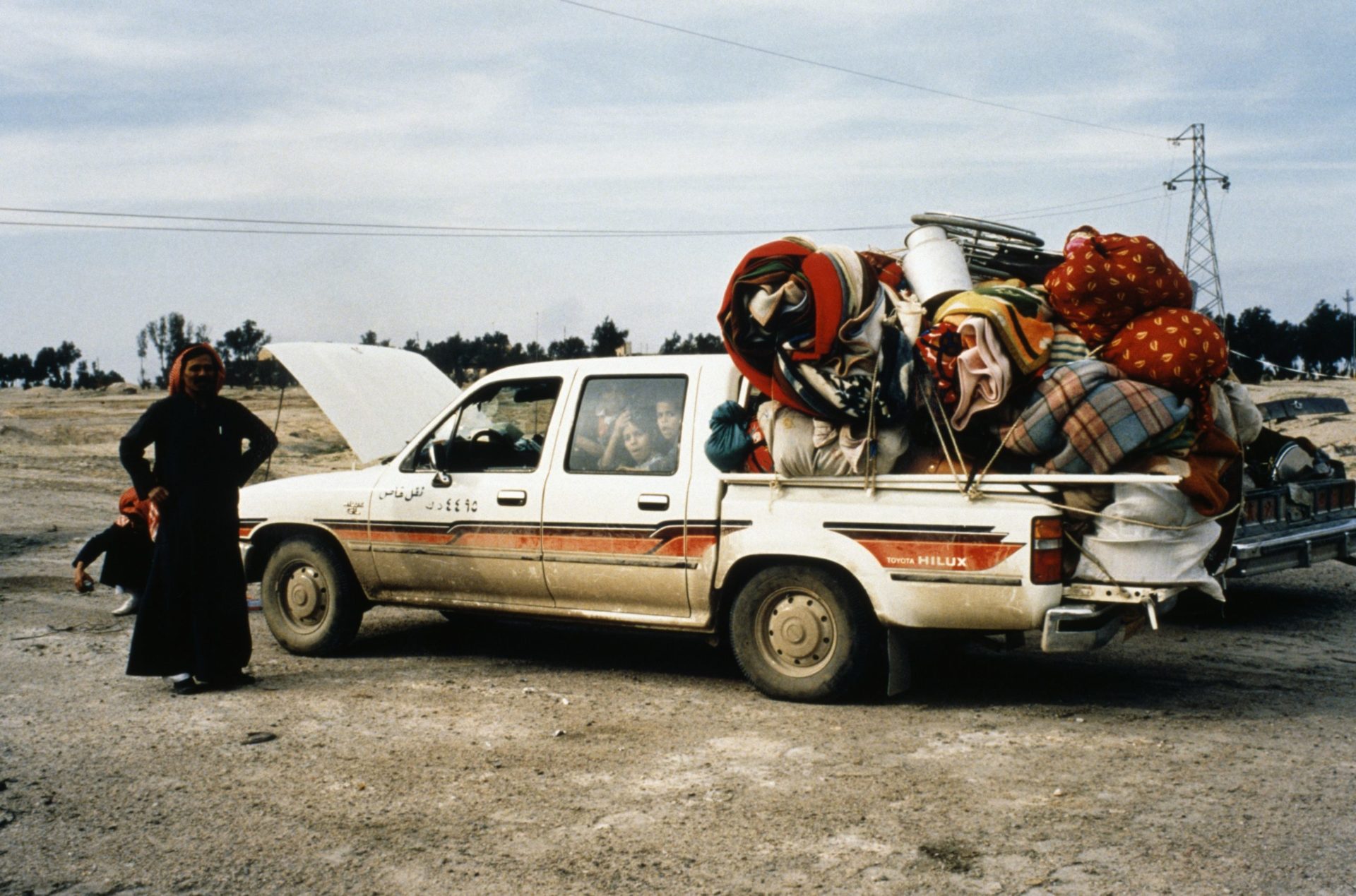
© John Keane (IWM GLF 174) A family and their overloaded car at a refugee centre on the Iraq Kuwait border, during the First Gulf War, 1991.
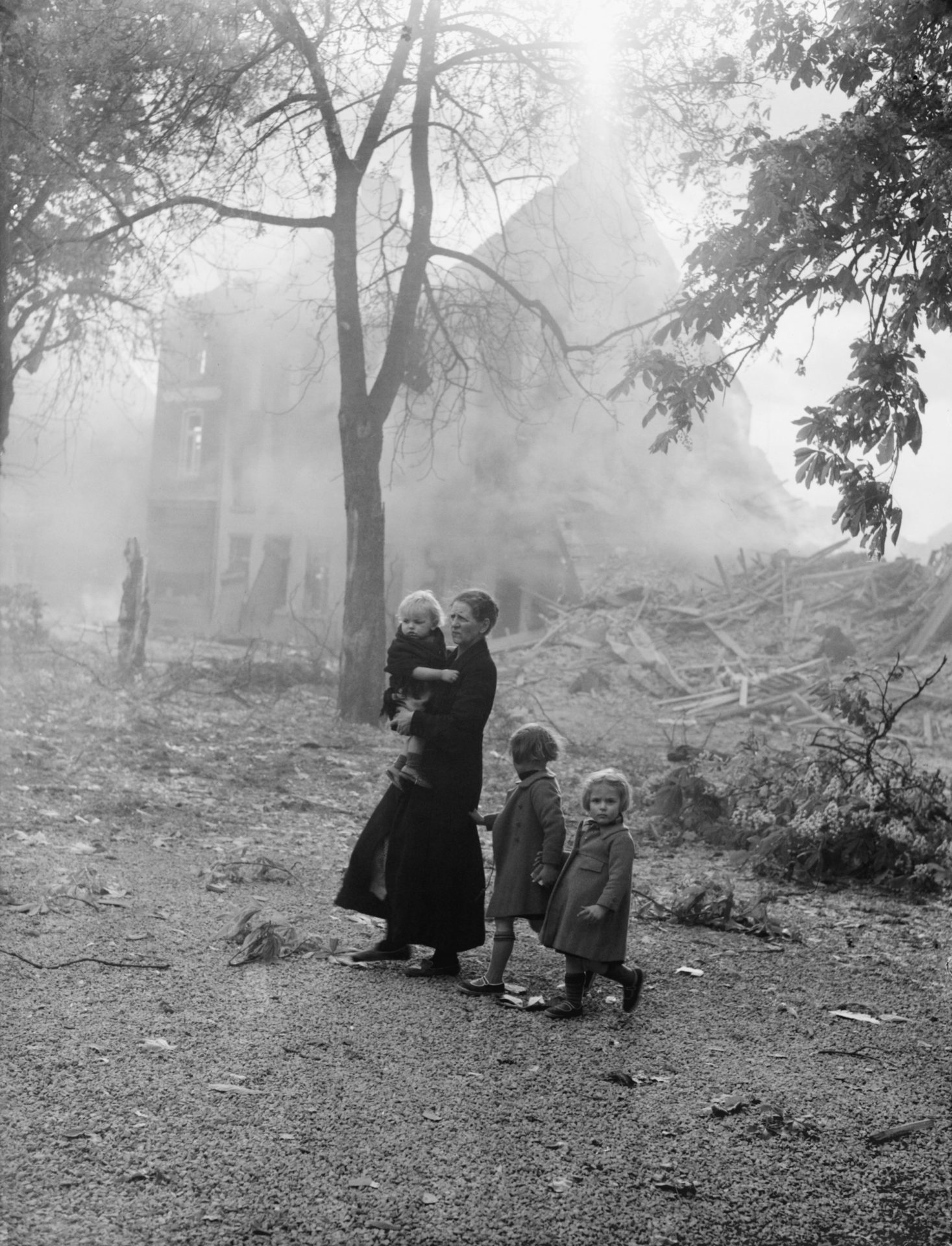
© IWM (F 4499) A mother and her children in front of a house destroyed in a German air raid on Enghien in Belgium, May 1940.
From the First World War to the present day, countless lives have been affected by conflict, resulting in ordinary people having to make extraordinary decisions – should they stay or go? This is the focus of Refugees: Forced to Flee (24 September 2020 – 24 May 2021), a major new exhibition at Imperial War Museum London.
Refugees: Forced to Flee is rooted in cutting-edge research, funded by the Arts and Humanities Research Council (AHRC) and the Economic and Social Research Council (ESRC), that explores the decisions and consequences faced by those whose worlds have been turned upside down by war over the past 100 years. Combining new research and real-life experiences with photographs, oral histories, documents and objects the exhibition will question why conflict forces people to leave once safe places.
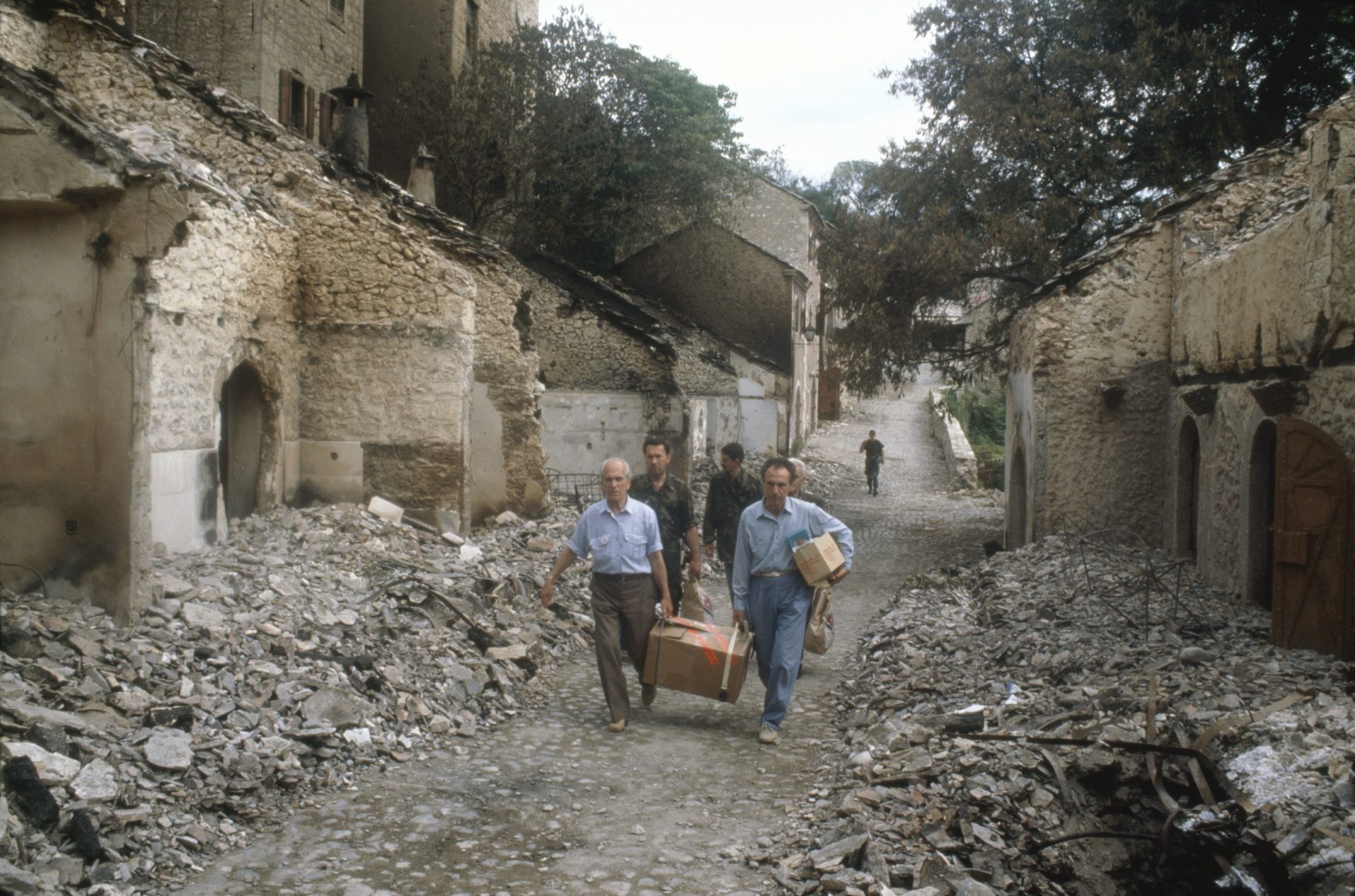
© IWM (BOS 233) Refugees, carrying whatever possessions they can, being escorted out of the Muslim old town area of Mostar in Bosnia after heavy fighting between Croat and Serb forces, June 1992.
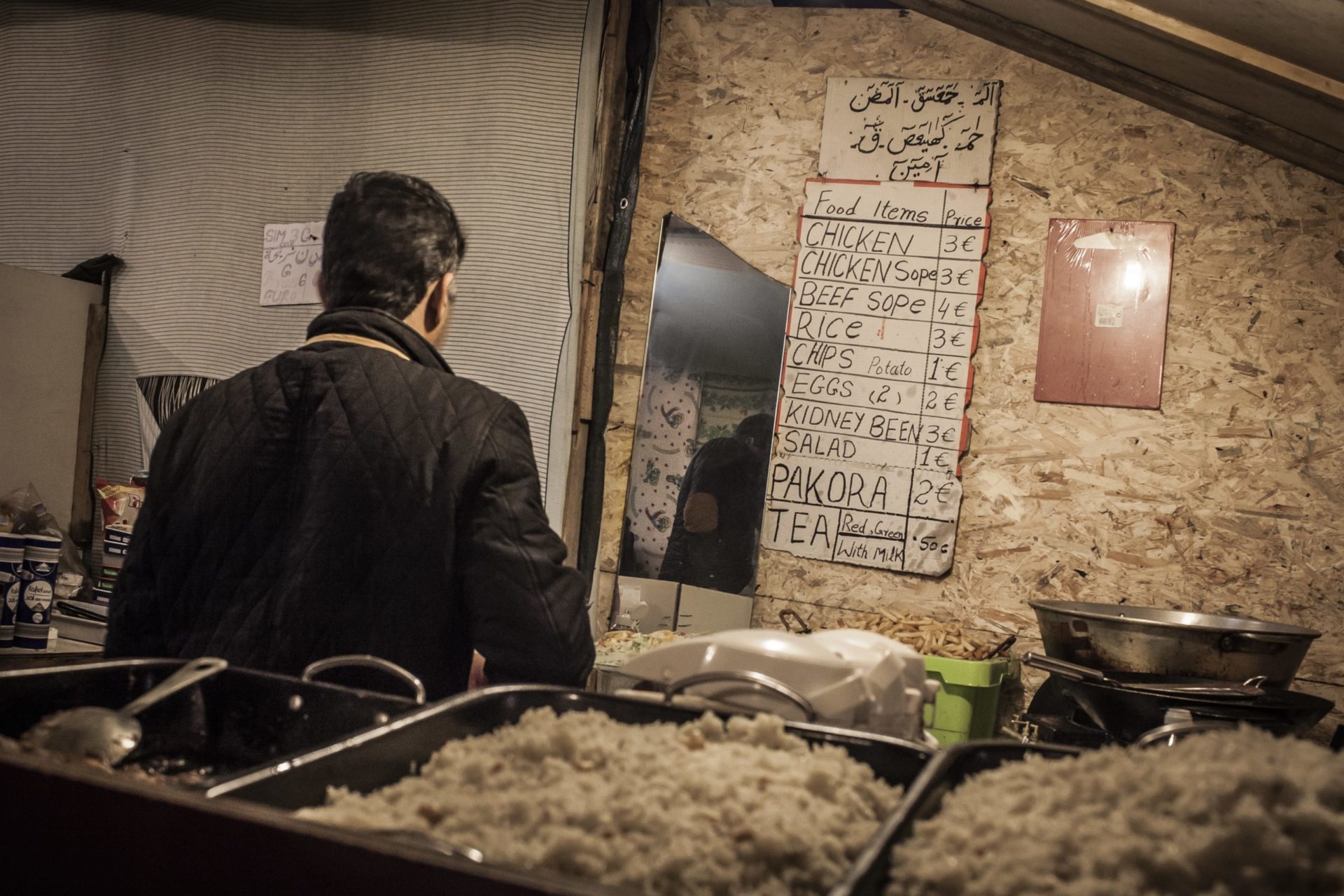
© Rob Pinney. Mario’s, one of many makeshift restaurants set up by camp residents. In addition to serving food, restaurants offered a warm place to socialise.
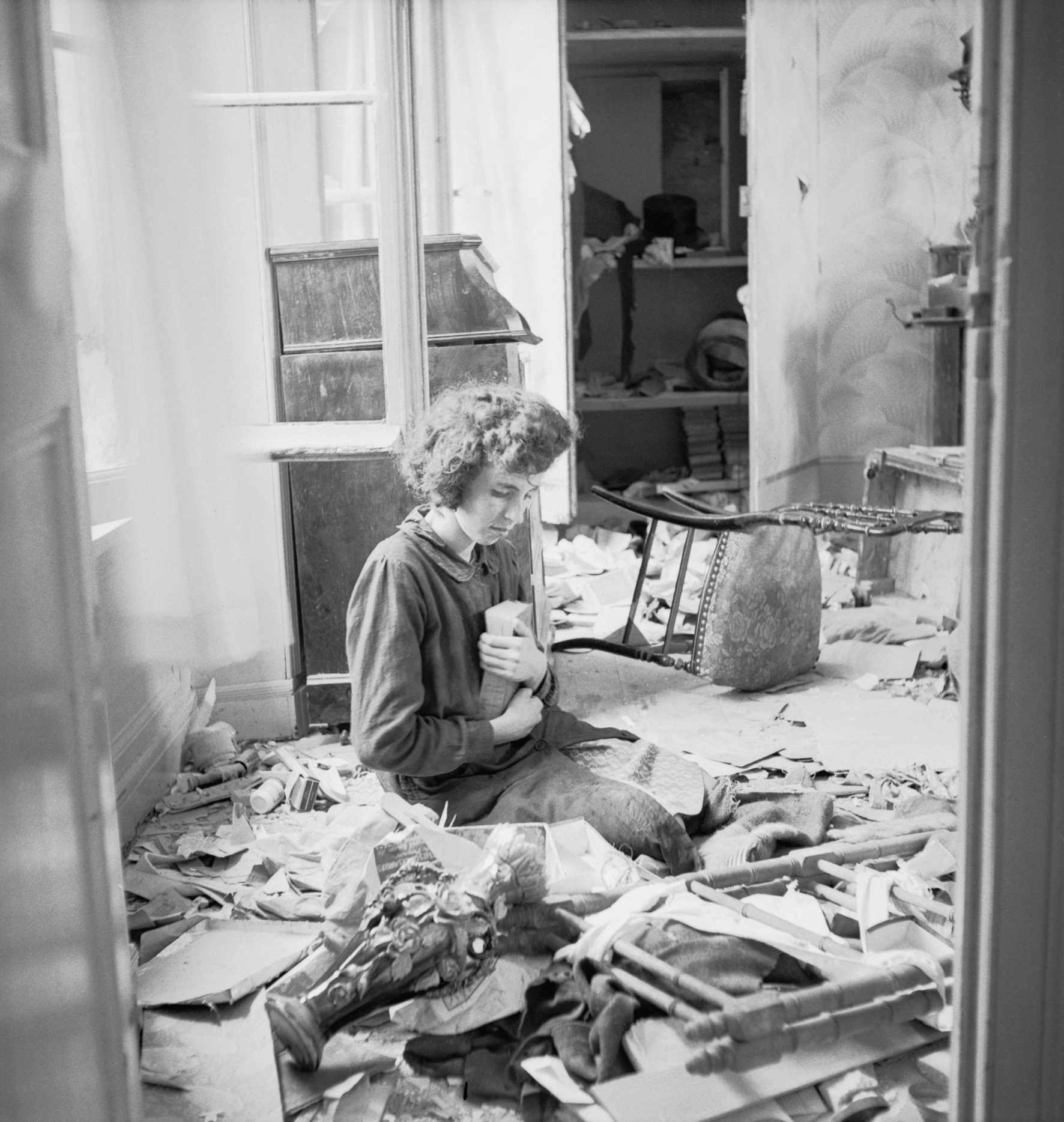
© IWM (B 7700). Mari-Anne Le Du clasps a treasured book in the ruins of her house in the village of Buron, Normandy, July 1944.
Challenging perceptions by putting people’s experiences at the centre of the exhibition, Refugees: Forced to Flee will explore why people flee their homes and take certain items with them; how they make their journeys and find safety; and the challenges that can be experienced when re-settling. Stories from the First World War, Second World War and its aftermath, 1990s Bosnia and present-day Afghanistan will be compared to expose the similarities encountered by those who leave, move and re-settle. Whether making physical journeys or facing bureaucratic barriers, the exhibition will demonstrate that regardless of time or place, the impact of conflict is the same – the catastrophic upheaval of ordinary lives.
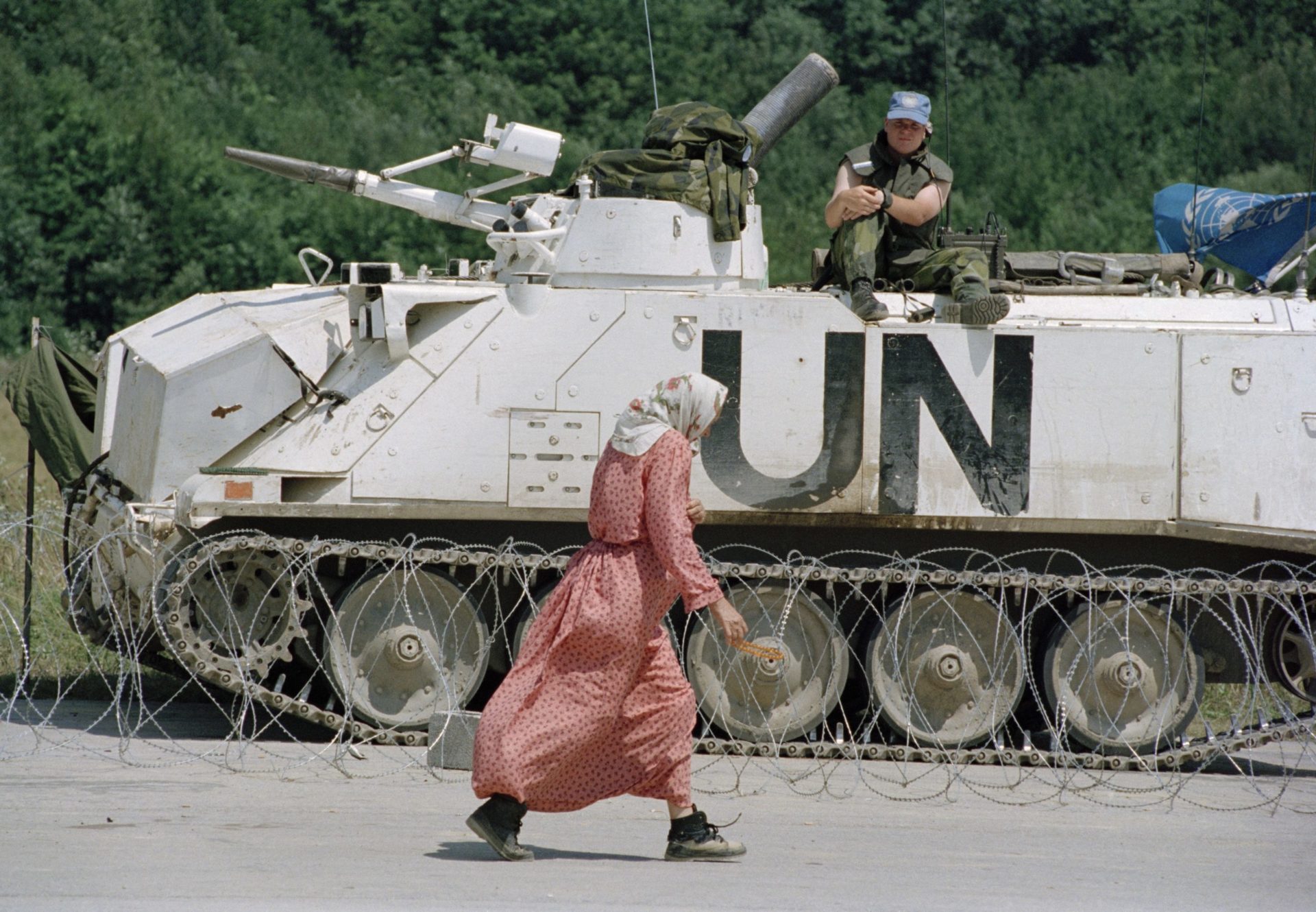
© IWM (HU 140279. A Muslim woman, one of many refugees expelled from Srebrenica by the Serbs, arrives at the UN camp set up at Tuzla airbase in Bosnia, 20 July 1995.
From the persecution of Jews in Nazi Germany and experiences of Kindertransport, to life in the Calais Jungle and Mediterranean crossings, exhibition highlights include: the diary of Eugeen Marie Bosteels, who described how he and his family were treated as they travelled as refugees in 1914 from Belgium to England; a six-point star badge marked with the word ‘Jude’ belonging to Emmanuel Seinfeld, who survived the war and whose daughter came to Britain on the Kindertransport; newly digitised images of United Nations peacekeeping missions during the Bosnian War; an animation following the difficult journey made by Habib Rezaie, an unaccompanied child asylum seeker who travelled from Afghanistan to the UK; newly commissioned contemporary artworks by London-based artists Shorsh Saleh, Grace Schwindt and Indrė Šerpytytė; seven new UKRI-funded research projects; and information, including propaganda material. The exhibition will also highlight the UK’s response to refugee crises throughout history.
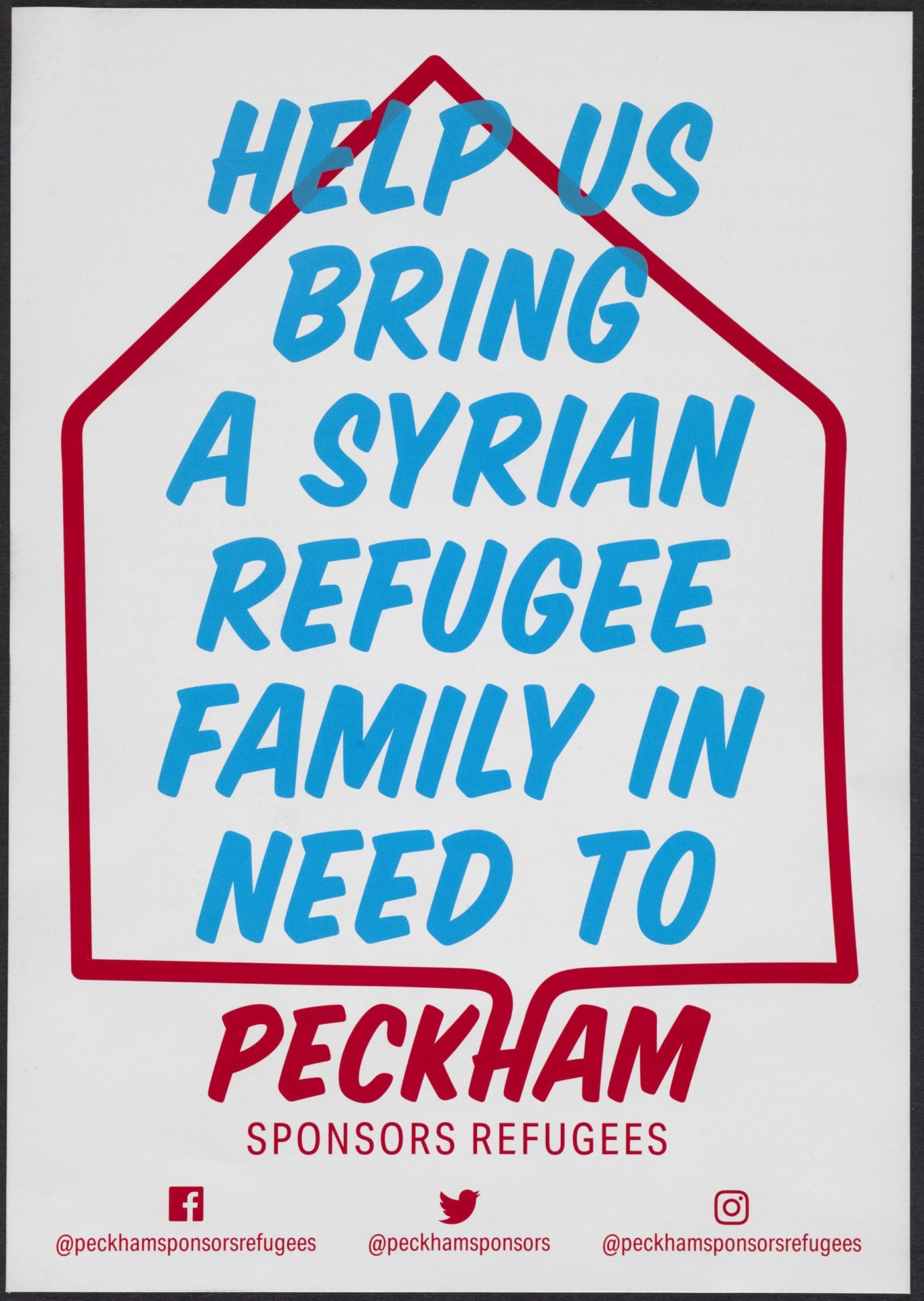
© IWM (LBY K. 19 / 2028) Leaflet produced by the community group Peckham Sponsors Refugees, set up early in 2018.
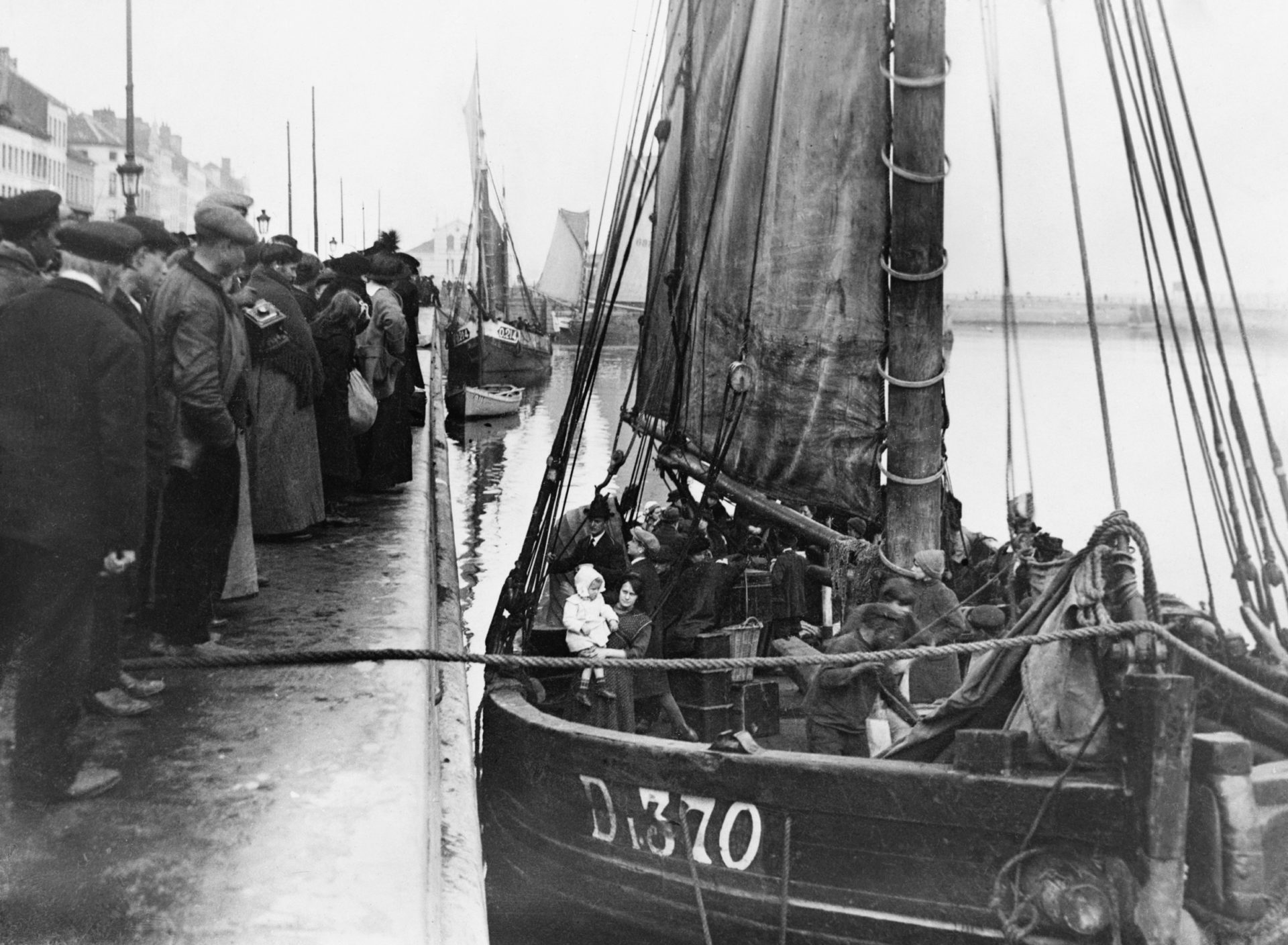
© IWM (Q 53340) Belgian refugees prepare to sail from Ostend to Britain, October 1914.
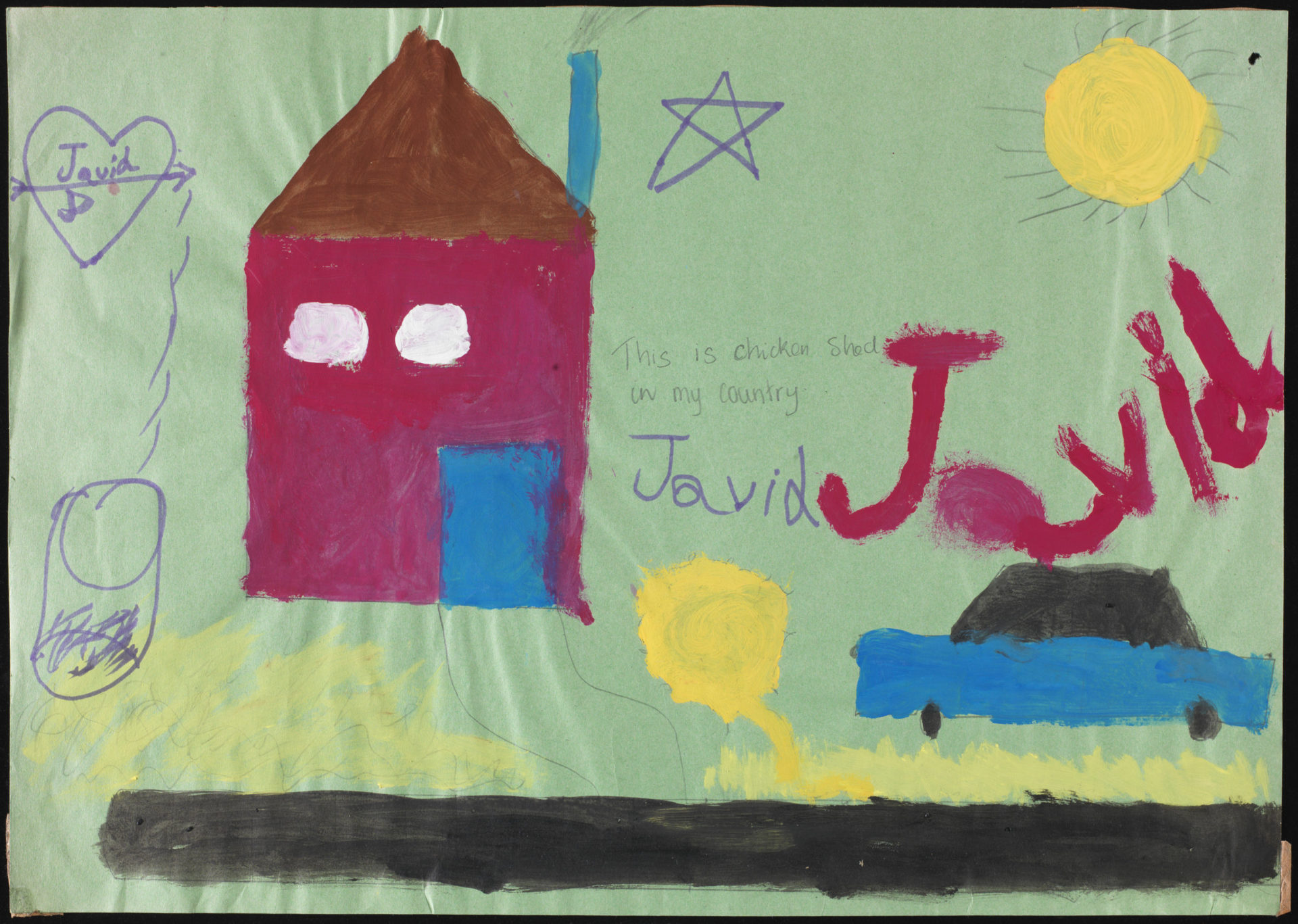
© IWM (5260.7) This painting was made by an Afghan child after they came to Britain as a refugee. It shows elements of the home they left behind, including a chicken hut. Afghanistan has a large farming population and many people led rural lives before they were forced to leave their home due to conflict.
